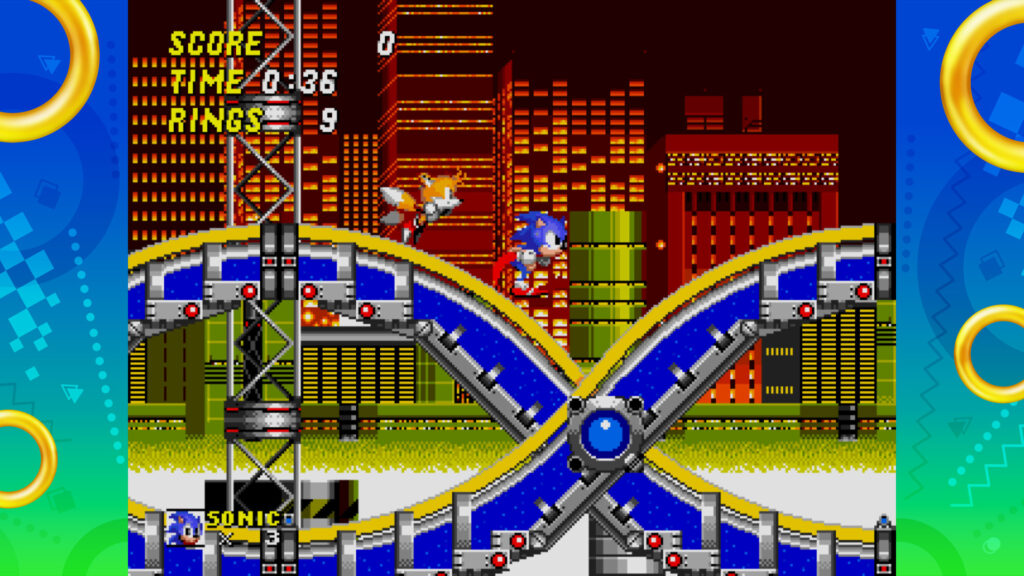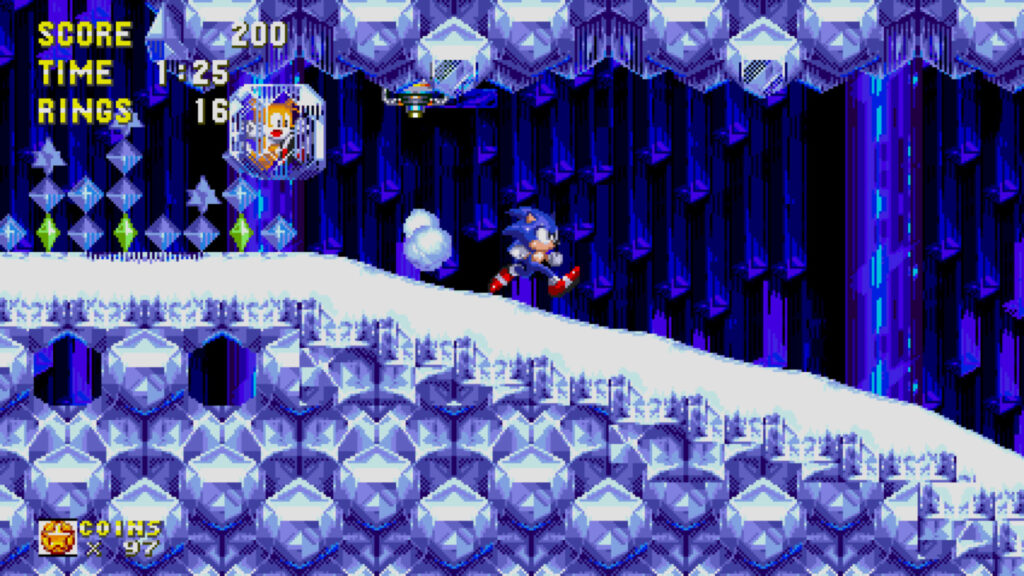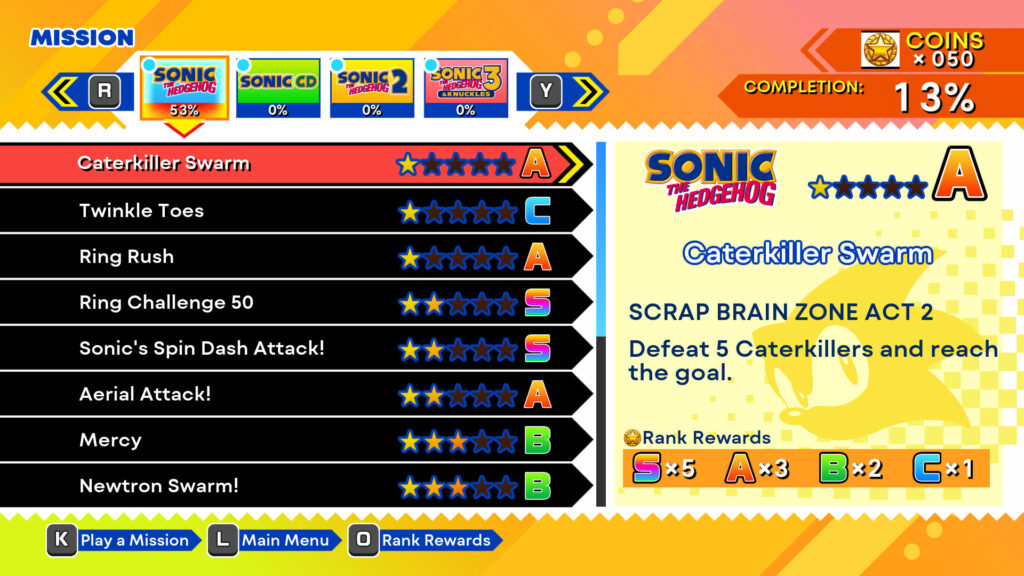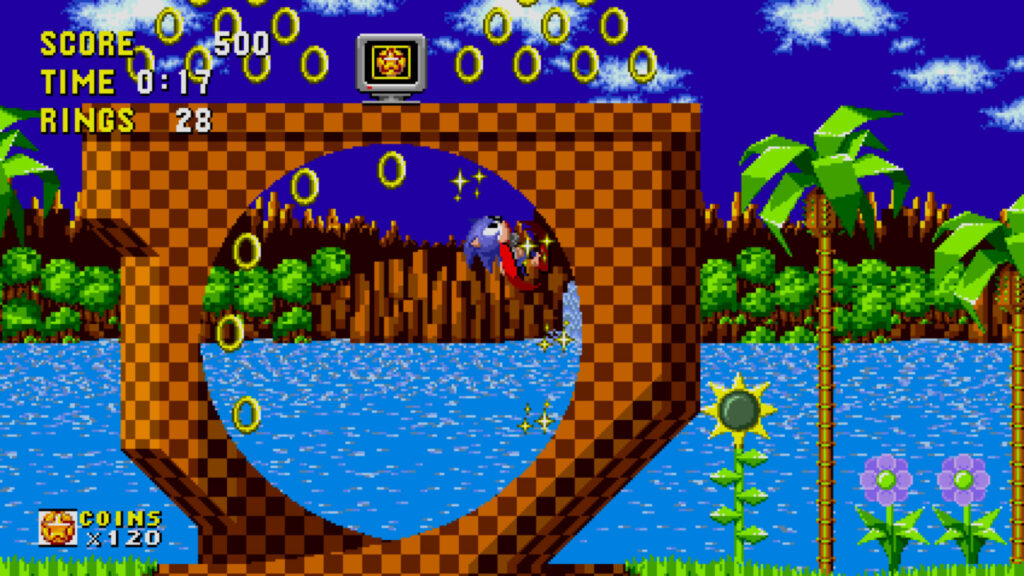Unfortunately, Sonic Origins is not a simple recommendation. It should be—these are some of the most important platformers of all time compiled into one modern, accessible package. On paper, Sega should have a slam dunk here.
For me, a casual Sonic fan, they absolutely do. I’ve loved my time with Sonic Origins on the whole. However, that experience stands in stark contrast to that of the hardcore enthusiasts who have been decrying the game’s issues on social media. The collection has not been treated kindly.
Sonic Origins’ Major Issues
Twitter is full of threads chronicling technical issues, and developers who worked on the project have been vocal about their dissatisfaction. To make matters worse, these modernized versions make fundamental gameplay alterations to the detriment of many veteran fans’ enjoyment.

It’s an issue made worse by Sega’s decision to delist the games in the compilation on most storefronts, leaving fans with Origins itself as the only way most are available. This isn’t a pretty sight.
Sega’s bungling of the games which helped define its identity is a major shame, and a seemingly avoidable issue. It rings of the disappointing GTA collection from last year, albeit to a far lesser degree. Nonetheless, Origins is an affront to preservation all the same, counterproductively removing more faithful releases in favor of flawed new ones.
Every company should’ve learned from Rockstar’s mistakes.
Seeing Past the Problems
However, like I said, I really like this collection. In the face of all these objective points that seems like a blatant paradox. Yet, it doesn’t feel that way. In the case of the GTA Trilogy, even as a newcomer to those sixth-gen titles, I could plainly see how deeply flawed the reworks were. I can’t discern most of Sonic Origins’ issues by contrast.
I’ve played Sonic 1 and Sonic 2 before, but growing up in the early 00s, my experience with Genesis Sonic was circumspect at best. Actually, one of my earliest exposures to Sonic 1 was (shudder) the abysmal GBA port.

I say this to establish the fact that I can’t really tell where Origins’ issues lie, having not played these games to death as a kid of the 90s. I didn’t even experience the supposedly rampant technical issues.
To me, Sonic Origins is the perfect way to connect with what most consider to be the franchise’s golden era. Revisiting the Genesis games I’d played before was nice, but finally checking out Sonic CD alongside Sonic 3 for the first time (I randomly had Sonic & Knuckles on Wii Virtual Console) was a treat.
Through my casual lens, the modern enhancements just made the games more enjoyable.
Sonic Origins Modernizes Classics
Seeing the brilliantly-detailed Zones stretch out across my TV in widescreen allowed me to better appreciate the scope of the art direction. Sonic has always succeeded due to its presentation and complex design—breaking free of 4:3 with cleaned-up pixel art brings these titles to a very impressive level of fidelity. They look timeless. I may even prefer the modernized aesthetic of Sonic 3 & Knuckles to that of Sonic Mania.
I’m also a huge fan of the revamped life system. Or, more aptly, the removed life system. While I’m partial to Sonic’s level design philosophy, it undeniably has a lot of rough edges. Like, a lot of them—particularly in Sonic 1. But, having the freedom to play without lives here sanded down some of the frustration, removing a totally antiquated difficulty gimmick in the process.
Lives are such an antiquated idea, but that’s a discussion for a different time.

What’s worth segueing into, though, is the structure that tied these modernized experiences together: Story Mode. I love this idea. In essence, Story Mode weaves Sonic 1, CD, 2 and 3&K together (in that chronological order) with brand new cutscenes on par with Sonic Mania’s wonderful intro. Putting these games into the conversation is a smart touch that makes the series feel grand, establishing a (thin) narrative through line and continuity.
It’s a bit disappointing, though, that the transition between titles isn’t as fluid as it otherwise could have been. You still have to watch the credits sequences between games. Sonic CD’s iconic intro cutscene is retained, but displayed in its native 4:3, which still holds up, but is incredibly jarring compared to the cinematics around it.
In some ways, Story Mode is akin to watching some cutscene connective tissue while you swap out Genesis cartridges, booting each from the start once the video has rolled. I was hoping for a totally seamless experience. It’s a great mode, but one that should’ve been excellent.
Reasons to Replay
Mission Mode, though, is absolutely excellent. Its ability to recontextualize these platformers into bite-sized challenges to work through is wonderful. The archetypes here are surprisingly diverse, doing far more than offering basic time trials and such for the most part. That’s what I was expecting. In reality, though, the Missions are quite dynamic, willing to fundamentally alter stages to highlight particular mechanics.

These add a lot of replay value to the package, as do the unlockable side modes. From Mirror Mode to Boss Rush, there are quite a few reasons to revisit each game in the package. Of course, there are leaderboards to race too. But, even if you don’t want to compete on those or for better ranks in Mission Mode, there’s plenty to do.
But, I wish there was just a bit more to unlock. There is plenty to spend the coins you accumulate between all the aforementioned modes on. But, these unlockables are sound tests, videos and illustrations. It’s expected fare. I wish there were more; perhaps new characters? Amy Rose, Metal Sonic—there are so many options that wouldn’t have been overly hard to implement.
Sega really set the bar for meaningful unlockables in last year’s Super Monkey Ball: Banana Mania. Origins doesn’t quite match it.
Sonic Origins: The Beginner’s Best Way to Play
Superfluous unlocks aside, from my point of view, I have little to complain about here. I can haggle over the unoptimized menu dioramas or unnecessary DLC add-ons. Likewise, I can point to a few design nitpicks. Or, I can refer you to the faithful Sonic fan’s laundry list of accumulating minute issues.

But, almost none of that registers. I’m having too much fun blasting through some of the 16-Bit era’s most compelling platformers. Sonic 1 and CD are strange, oddly-designed games but even those are made better by Story Mode, Mission Mode, widescreen, and no lives in my eyes. Sonic 2 and 3 are just brilliant. And, they’re made even stronger by those aforementioned modern features.
When you fall into the tempo of Sonic’s gameplay, fueled by level design driven through improv platforming that sees you skipping from ledge to loop by the skin of your teeth, all elevated by wonderful art direction and music, it’s hard to notice much else. If you’re hardcore enough to notice changes in boss hitboxes, you might not find that rhythm here.
For the more casual fan though, Origins feels pretty definitive.

